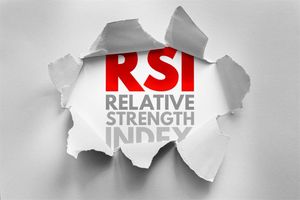
Precision motion systems specialist Allient (NASDAQ: ALNT) reported Q1 CY2025 results exceeding the market’s revenue expectations, but sales fell by 9.5% year on year to $132.8 million. Its non-GAAP profit of $0.46 per share was 35.3% above analysts’ consensus estimates.
Is now the time to buy Allient? Find out by accessing our full research report, it’s free.
Allient (ALNT) Q1 CY2025 Highlights:
- Revenue: $132.8 million vs analyst estimates of $125.6 million (9.5% year-on-year decline, 5.7% beat)
- Adjusted EPS: $0.46 vs analyst estimates of $0.34 (35.3% beat)
- Adjusted EBITDA: $17.47 million vs analyst estimates of $14.33 million (13.2% margin, 21.9% beat)
- Operating Margin: 6.6%, down from 8.5% in the same quarter last year
- Free Cash Flow Margin: 9.7%, up from 4.2% in the same quarter last year
- Backlog: $237.3 million at quarter end
- Market Capitalization: $370.3 million
Dick Warzala, Chairman and CEO, commented, “Our first quarter results demonstrate the strength of our diversified business model and the effectiveness of our strategic initiatives. We achieved solid sequential growth in sales and profitability overall as we continue to more closely align our business with our customers and focus on taking the necessary actions to ensure we achieve our long-term strategic goals and objectives. Our 'Simplify to Accelerate NOW' actions are aligned with our strategy and are delivering meaningful improvements to our operational performance and positioning us for long-term success.
Company Overview
Founded in 1962, Allient (NASDAQ: ALNT) develops and manufactures precision and specialty-controlled motion components and systems.
Sales Growth
A company’s long-term sales performance is one signal of its overall quality. Even a bad business can shine for one or two quarters, but a top-tier one grows for years. Regrettably, Allient’s sales grew at a mediocre 6.9% compounded annual growth rate over the last five years. This was below our standard for the industrials sector and is a rough starting point for our analysis.
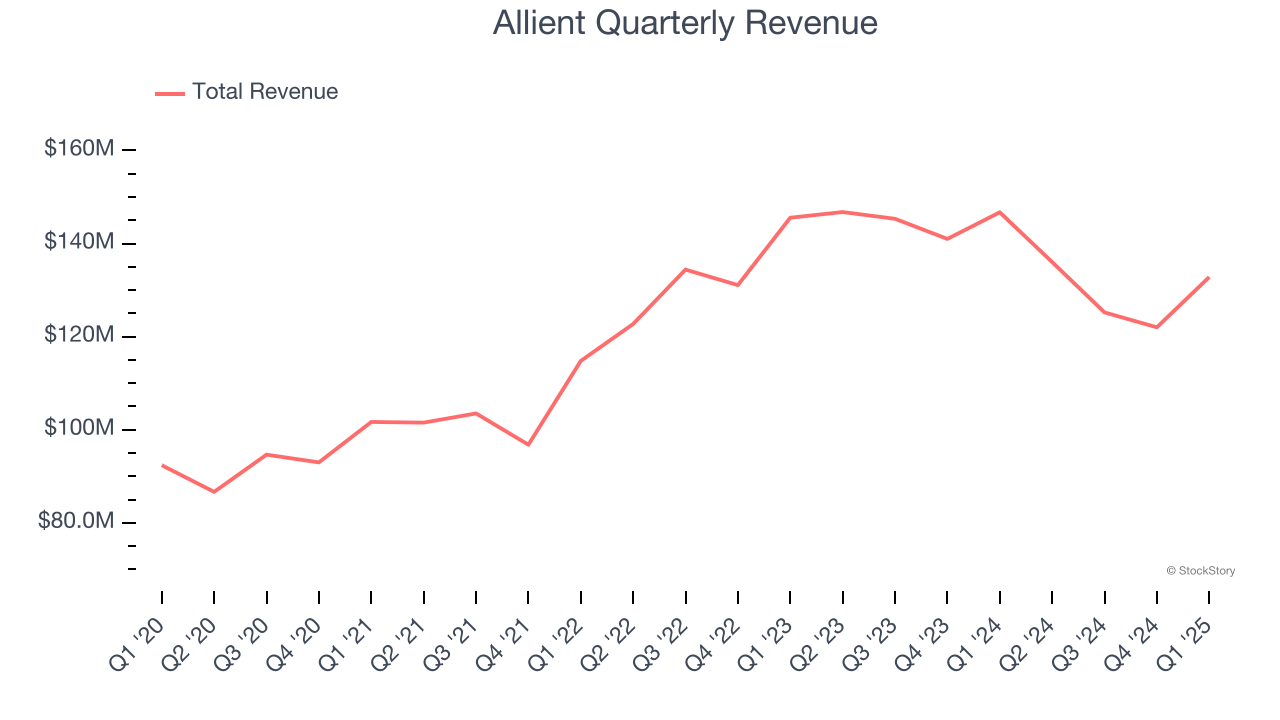
We at StockStory place the most emphasis on long-term growth, but within industrials, a half-decade historical view may miss cycles, industry trends, or a company capitalizing on catalysts such as a new contract win or a successful product line. Allient’s performance shows it grew in the past but relinquished its gains over the last two years, as its revenue fell by 1.7% annually. Allient isn’t alone in its struggles as the Electronic Components industry experienced a cyclical downturn, with many similar businesses observing lower sales at this time. 
This quarter, Allient’s revenue fell by 9.5% year on year to $132.8 million but beat Wall Street’s estimates by 5.7%.
Looking ahead, sell-side analysts expect revenue to grow 3.7% over the next 12 months. While this projection suggests its newer products and services will catalyze better top-line performance, it is still below the sector average.
Software is eating the world and there is virtually no industry left that has been untouched by it. That drives increasing demand for tools helping software developers do their jobs, whether it be monitoring critical cloud infrastructure, integrating audio and video functionality, or ensuring smooth content streaming. Click here to access a free report on our 3 favorite stocks to play this generational megatrend.
Operating Margin
Operating margin is one of the best measures of profitability because it tells us how much money a company takes home after procuring and manufacturing its products, marketing and selling those products, and most importantly, keeping them relevant through research and development.
Allient was profitable over the last five years but held back by its large cost base. Its average operating margin of 6.6% was weak for an industrials business.
Looking at the trend in its profitability, Allient’s operating margin decreased by 1.2 percentage points over the last five years. This raises questions about the company’s expense base because its revenue growth should have given it leverage on its fixed costs, resulting in better economies of scale and profitability. Allient’s performance was poor no matter how you look at it - it shows that costs were rising and it couldn’t pass them onto its customers.
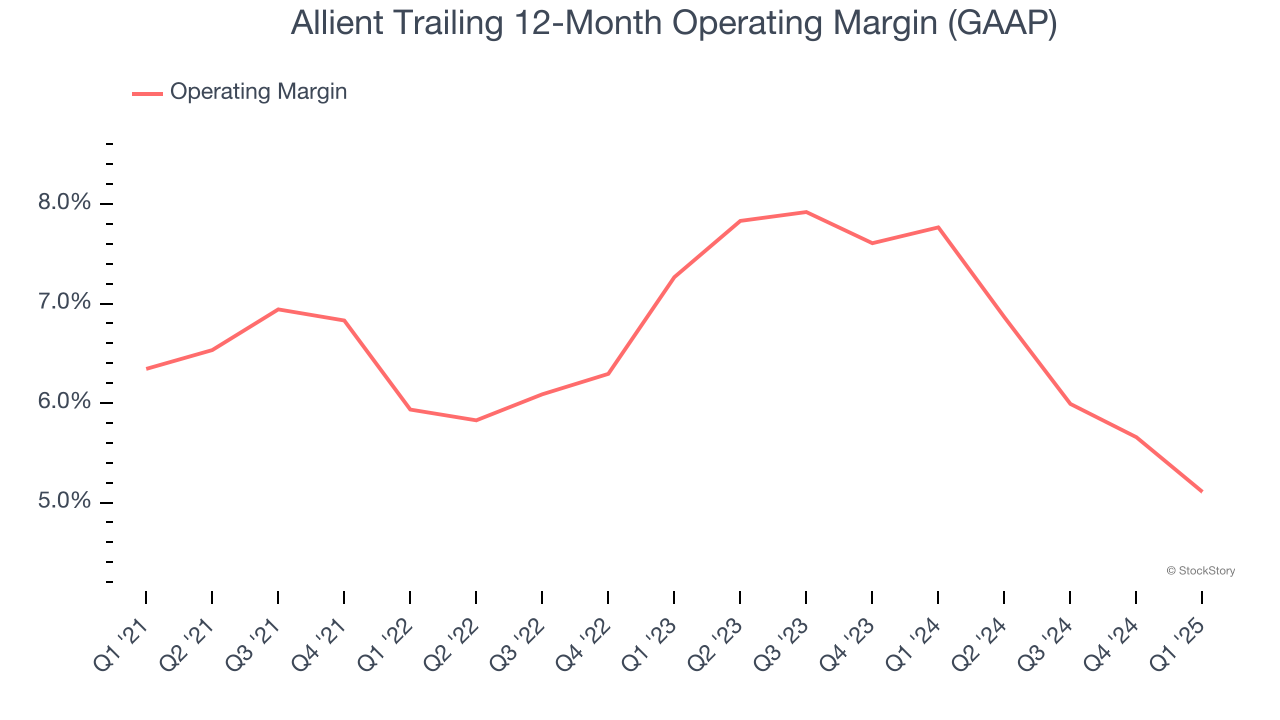
In Q1, Allient generated an operating profit margin of 6.6%, down 1.8 percentage points year on year. Since Allient’s operating margin decreased more than its gross margin, we can assume it was less efficient because expenses such as marketing, R&D, and administrative overhead increased.
Earnings Per Share
We track the long-term change in earnings per share (EPS) for the same reason as long-term revenue growth. Compared to revenue, however, EPS highlights whether a company’s growth is profitable.
Allient’s EPS grew at a weak 3.6% compounded annual growth rate over the last five years, lower than its 6.9% annualized revenue growth. This tells us the company became less profitable on a per-share basis as it expanded.
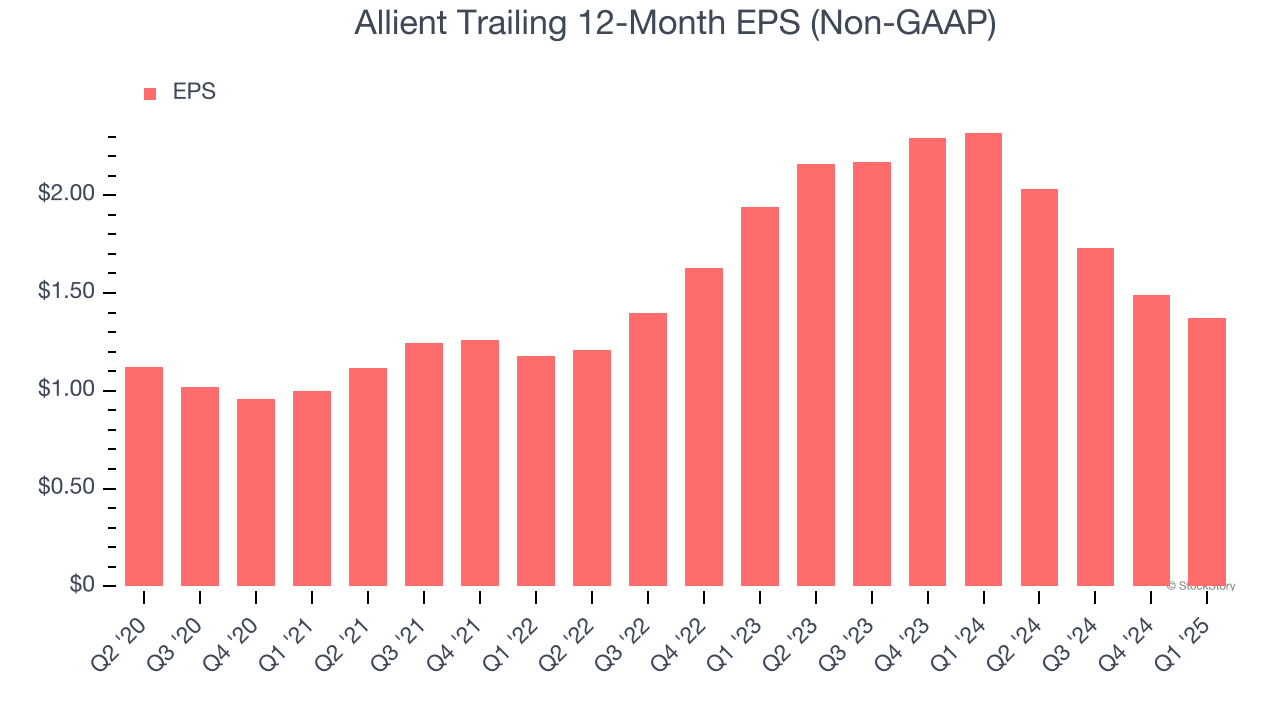
Diving into the nuances of Allient’s earnings can give us a better understanding of its performance. As we mentioned earlier, Allient’s operating margin declined by 1.2 percentage points over the last five years. Its share count also grew by 16.6%, meaning the company not only became less efficient with its operating expenses but also diluted its shareholders. 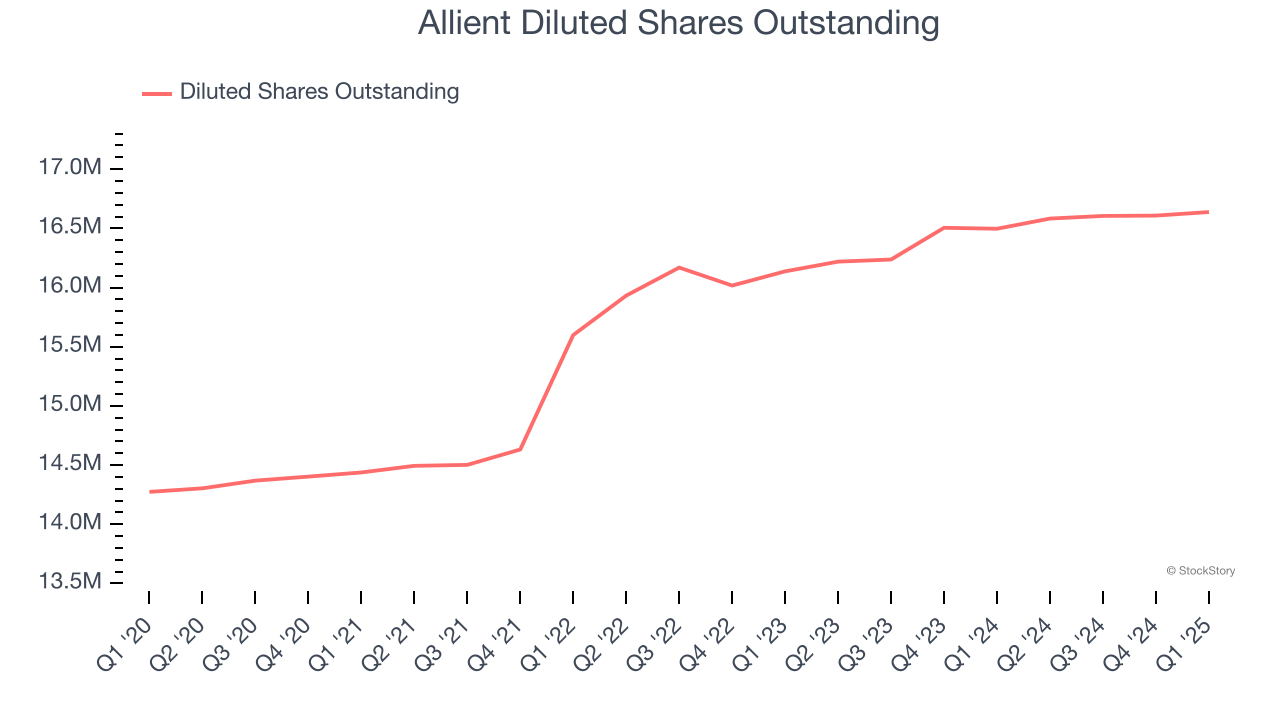
Like with revenue, we analyze EPS over a shorter period to see if we are missing a change in the business.
For Allient, its two-year annual EPS declines of 16% show it’s continued to underperform. These results were bad no matter how you slice the data.
In Q1, Allient reported EPS at $0.46, down from $0.58 in the same quarter last year. Despite falling year on year, this print easily cleared analysts’ estimates. Over the next 12 months, Wall Street expects Allient’s full-year EPS of $1.37 to grow 39.1%.
Key Takeaways from Allient’s Q1 Results
We were impressed by how significantly Allient blew past analysts’ revenue, EPS, and EBITDA expectations this quarter. Zooming out, we think this quarter featured some important positives. Shares traded up 1.7% to $22.12 immediately after reporting.
Big picture, is Allient a buy here and now? The latest quarter does matter, but not nearly as much as longer-term fundamentals and valuation, when deciding if the stock is a buy. We cover that in our actionable full research report which you can read here, it’s free.


